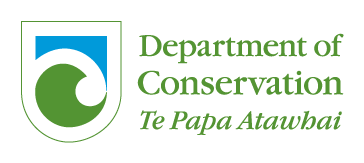
Credit: Unsplash
April 14, 2022
This section looks at the Tourism Electronic Card Transactions, measuring electronic card activity attributable to tourism. This excludes cash, pre-purchases, and online spend. It also looks at the data from the Accommodation Data Programme, measuring short-term commercial accommodation activity such as guest nights and occupancy rates.
This section uses weekly provisional data from StatsNZ: border crossings, particularly arrivals; and visitor arrivals. Visitor arrivals are a subset of border arrivals, which can also include New Zealand resident crossings. This section also looks at international card spend data from Marketview made available by MBIE via the Consumer Spend Dashboard.
Nationwide, domestic tourism electronic card spend fell by only 4% in summer 2022 compared with summer 2021, despite restrictions on travel across Auckland's regional border until 15 December, and the onset of the Omicron outbreak towards the end of January.
January 2022 saw a return to relative normality with the entire nation under the Orange traffic light setting of the COVID-19 Protection Framework (CPF Orange). This was reflected in January 2022 spend figures, recovering to January 2021 levels – up 1%.
The entire nation remained in CPF Red throughout February 2022 in response to community transmission of the Omicron COVID-19 variant. This was reflected in the 10% decline in nationwide domestic card spend compared with February 2021.
Despite the near-recovery in domestic card spend over summer 2022 compared with summer 2021, total guest nights hosted by core accommodation providers in Aotearoa New Zealand fell 17% nationwide over summer 2022 compared with summer 2021.
Even as public health measures eased with the move to the COVID-19 Protection Framework, some destinations experienced significant declines in guest nights in December 2021. That month, Auckland and Rotorua hosted almost half the guest nights in December 2020 (down 42% and 43% respectively).
In the week-ended 18 April 2021, border arrivals from Australia had nearly disappeared compared with 2019 levels. In the week-ended 25 April 2021, after one week of trans-Tasman quarantine free travel (QFT), the decline had reduced to 70% on 2019 levels.
The recovery back towards 2019 levels continued during May 2021, peaking with a decline of only 61% on 2019 levels in the week-ended 16 May 2021. Similar levels were also seen towards the second half of June 2021.
In the first week of QFT (week-ended 25 April), three-quarters of visitors from Australia arrived to visit friends or relatives, compared with a quarter of Australian arrivals from the same week in 2019.
Holidaymakers consisted of just under 10% of visitor arrivals during this same week, down from 53% in the same week in 2019.
We can watch the composition of visitor arrivals change over time as the QFT period progressed. By the end of June, the proportion of holidaymakers from Australian visitor arrivals tripled to 29% in the week-ended 27 June.
By the week-ended 7 May in the QFT period of 2021, retail spend in alcohol, food and beverages recovered to levels in the same week in 2019 and experienced growth throughout the QFT period.
In contrast, industries with a closer association to tourist activity remained significantly down on 2019 levels throughout the QFT period: accommodation; cultural, recreational and gambling services; and other passenger transport. This reflects our expectations that initial travellers from Australia are business travellers and people visiting friends and relatives, rather than holidaymakers.

